Field test and review
Heading out into the wilderness can reward you in more ways than you may anticipate. During your hikes, you rely heavily on your clothing and equipment to keep you warm, dry and provide comfort where Mother Nature forgot to. One of the most important ways to maintain your comfort on the trail is to get the best hiking shoes for you and your adventure. The style of shoe or boot that you choose will be determined by the terrain, the distance of the hike and the loads that you are carrying. For this reason, I own a number of different styles of footwear from trail runners to a more rugged shoe through to sturdy, mid-height boots for additional ankle support, where required.
Hiking Shoes
Think lightweight, comfortable and flexible. Basically, they should feel like your favourite pair of trainers or walking shoes but give you a lot more support and stability. They won’t offer the protection and ankle support of a bigger, more cumbersome boot, but when that’s not required, they can be much more comfortable.
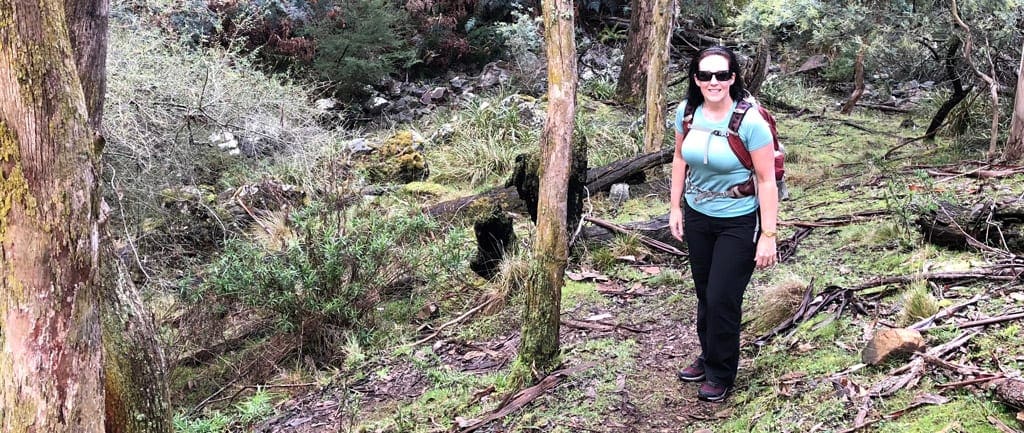
Recently I was sent a pair of Ascent Explore Merlot’s to field test. Ascent claim that the Explore extends your horizons by slowing fatigue, and does it in cushioned, waterproof comfort. A lightweight day hiker and versatile travel shoe, the Explore features medial support for over-pronators, stability and traction on uneven surfaces, has a generous fit, and is soft against your foot preventing rubbing and blisters. So how did they shape up?
My husband and I headed into the Lerderderg State Park, our local haunt in Victoria’s West, for some partial off-track exploring. I was keen to wear my new Ascent Explore hiking shoes as this was expected to be a shorter walk of about 3 hours and presented the ideal opportunity to wear them in. I know I can develop blisters quickly and easily, the many discarded hiking shoes and boots lying in my garage attest to this, so I packed a pair of faithful old runners into my backpack, just in case.
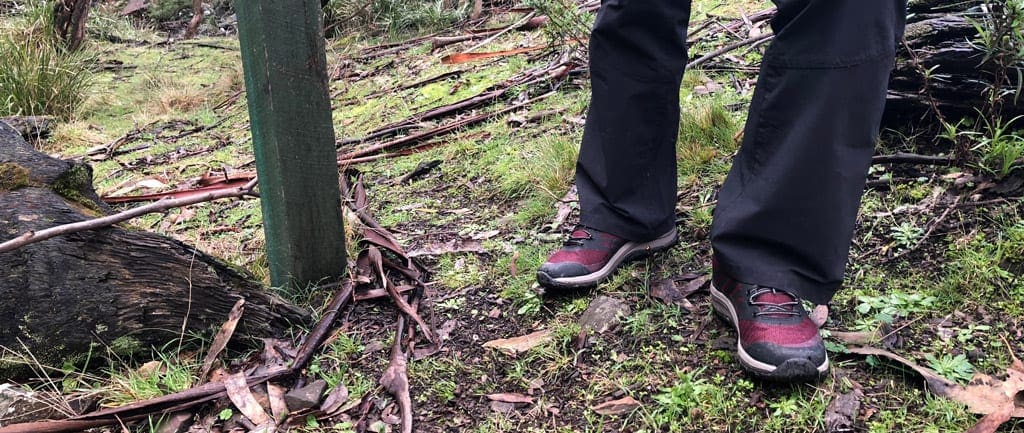
The first thing I will comment on about the Ascent Explore is that I didn’t find them in an outdoor store, so you can be excused if you have never heard of the brand before. The ones I was wearing came from The Athletes Foot and can also be purchased online. I am guessing that Ascent will be targeting these shoes at people heading outdoors for fitness as this is a growing market.
When trying on the Explore I requested a half a size larger than my regular shoe size as I always do with my hiking footwear. It is important to allow enough room for your feet to swell as well as space in the toe-box to save your toenails on downhill descents. The size I selected offered plenty of toe room, but the Explore did feel firmer across the top on my toes and the bridge of my feet than I was used too. It is a stylish looking shoe, unlike like my first pairs of hiking shoes many years ago that came in a very ordinary shade of brown. The sole felt quite rigid and stable, as I would have expected, my arch felt well supported, and the upper was soft and cushioning. Overall, they felt lightweight, comfortable and flexible, just as Ascent claimed they would.
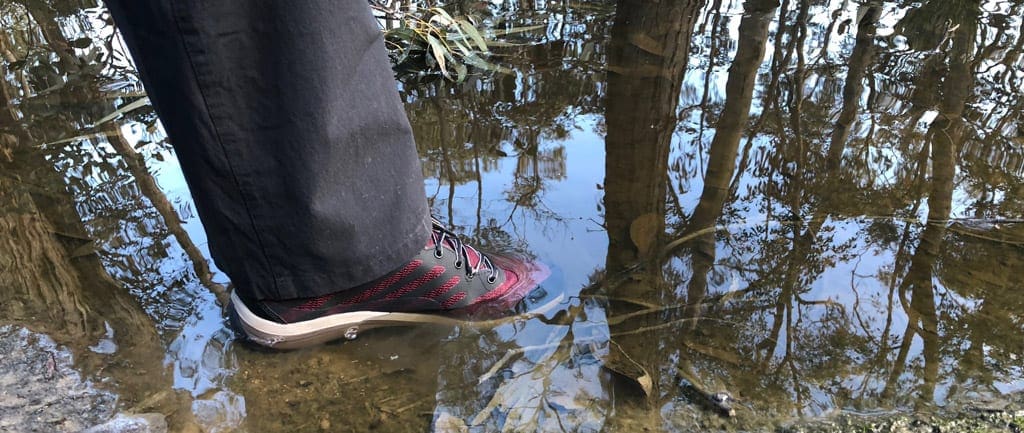
Heading into the Lerderderg with the Explore, my first impression on the trail was that they felt firm on my feet, almost too snug and I wondered just how comfortable they would feel after hours of walking. We had only walked a short distance from the trail-head when we came across a large puddle on the trail, perfect for testing if the Explore were as waterproof as the manufacturer claimed. I stood in the middle of the puddle to see how long it would take for the water to penetrate the shoe. After a few minutes, my husband became impatient and asked that I come out of the water now so that we could continue our hike. To my delight, my feet stayed dry, so far the waterproofing works.
The trail led us on a steeply downhill for the next forty minutes before reaching the river in the gorge below. I paid close attention to the movement of my feet during this descent and noted that my feet did not slide inside the shoe and my toes remained well away from the end of the toe-box, despite the steepness of the terrain. I also realised that the shoes seemed to mould well around my feet, hugging and supporting, and they no longer felt too snug. In fact, they felt incredibly soft and comfortable with plenty of cushioning underfoot on the rough trail.
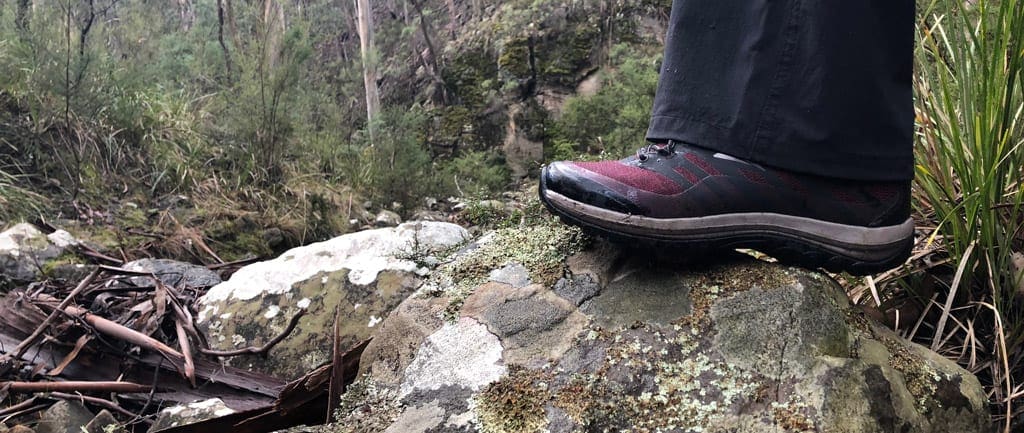
We followed the river along the narrow gorge for the next hour and a half. Progress was slow at times as we picked our way over uneven rocks and fallen trees. The rocks in this section of the river can often be dangerously slippery and require careful navigation if you don’t want to end up stumbling to the ground. Thankfully the Explore has an aggressive outsole tred, which seemed to grip the rocky and loose terrain with ease. I did still manage the occasional slide across particularly rock faces, but for the most part, they performed exceptionally well. Not that I was counting, but my husband slipped more times than me.
Further along the gorge, we came upon a huge tree that had fallen across the river. Flood debris was mounted high against the trunk, evidence that the river, which was almost dry at present, was at some time deep and swift flowing. Cautiously, I chose a section that looked sturdy enough to scramble over. My husband had selected a different section and was already on the other side waiting for me. He started to say something about being careful about the strength of the debris when my left leg disappeared completely with my right knee rising to meet my chest. Somewhat stunned, I stood motionless in a pile of twisted twigs contemplating what injuries I may have just received. Thankfully I was uninjured apart from my pride and a bit of shin grazing, no doubt the bruising would develop later.
After assessing my injuries, I then realised that I was dangling quite a distance from the ground. My husband stifled a laugh as he tried to decide if he should reach for his camera or assist me. He chooses the safer option and caringly offered his hand. Back on stable ground, we both laughed, I brushed myself off, and we returned to the trail ahead. A hike isn’t a hike unless I come out with a bruise or two on my legs.
Not too much further along the river we came upon yet another large tree, piled high with debris. Following a quick assessment, we decided not to take any chances this time and scramble our way around the edge of the fallen trunk on the steep bank.
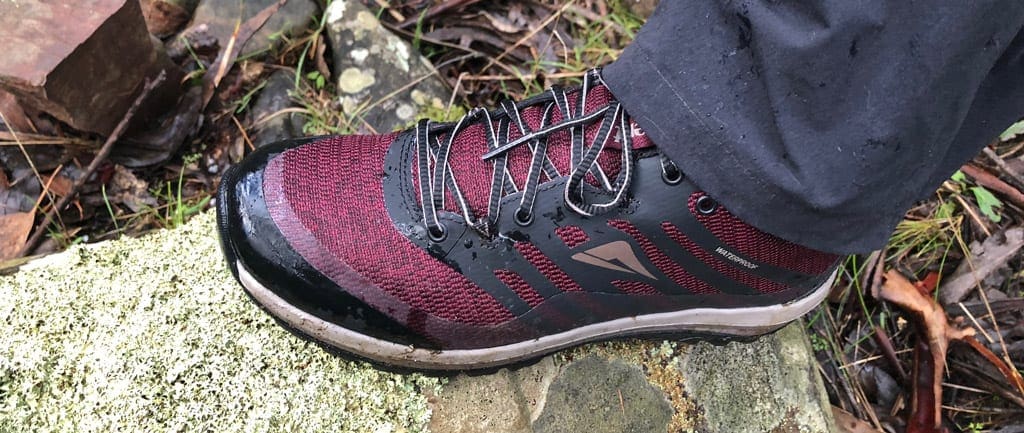
After stopping briefly for lunch, we located the end of a narrow spur then commenced the steep and steady ascent heading back to our vehicle. I was looking forward to this uphill section as I knew this would truly test the performance of my new hiking shoes.
Many of my hiking shoes, that have felt comfortable and supportive on flat terrain, have failed my heels dismally in extended steep ascents. It is for this reason that I generally apply copious amounts of blister prevention to my heels before I commence any hike. On this occasion, however, I chose not to follow this regime as I wanted to thoroughly test the Explore, even if it did result in pain and suffering. After an hour of steady climbing, we finally reached the top of the spur. We stopped for a quick breather while I anxiously removed my shoes to check for signs of damage. Wow, I did not have a single blister or any signs of hot spots. Ascent claim that the Explore does not have any abrasive contact points and I had to agree and was suitably impressed.
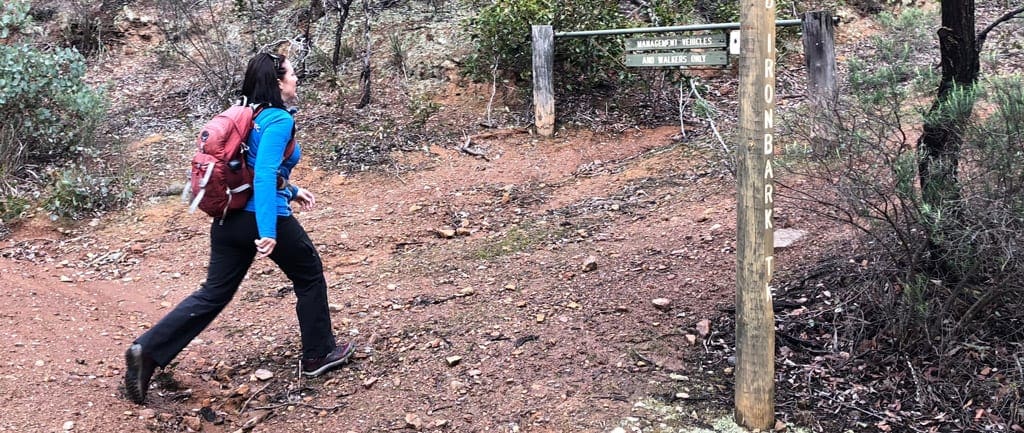
The Ascent Explorer Merlot felt a lot more comfortable at the end of the hike than they did when I when I first started out! They were comfortable, flexible, provided excellent support (on all terrain) and by the end of the hike had moulded to my feet like a favourite pair of runners. I was so impressed with the Explore following this three-hour hike that I wore them on our next 21km, five-hour adventure in the Brisbane Ranges. They felt even more comfortable by the end of this hike.
With all new hiking shoes or boots, it is recommended that you wear them on short walks, around the house and down to the shops before hitting the trail with them. This process will soften up the material of the shoes so that they don’t rub your feet uncomfortably. ‘Wearing-in’ in your footwear is the best way to ensure that they don’t cause discomfort and blisters when out on a hike. I am impressed to say that there was no wearing-in required with the Ascent Explore, they offered me comfort and protection, right out of the box. I am thrilled to announce that I have found an excellent hiking shoe that will remain my shoe of choice for many hikes to come.
Buy direct from Ascent Footwear for $189.95
Tech Specs
Outsole
- TRACTION: Aggressive outsole tred, ideal for use on trails and loose terrain.
- Cushioning Arch Support Insole (BUNGEE): Arch support insole with increased arch support and more cushioning. Removable, and so able to be replaced with orthotics if needed.
- BUNGEE™ Midsole Top: Provides excellent energy return over an extended period, so that the spring stays in your step no matter how far you walk or run.
- POLIMAX® Stroble: Cushions and protects the area directly underneath the foot. Assists in keeping the foot fresh and controlling sweat.
Stability
- Kinetic Matrix™: A system of technologies combining to enhance gait efficiency and reduce fatigue to the foot and lower limbs.
- Nylon Shank: Supports the arch area of the foot and prevents the shoe from bending in the wrong place (in the middle of the shoe). The shoe should naturally bend across the joints in the forefoot region.
- Thermoplastic Heel Counter: Supports the ankle and holds the heel firmly in place, providing excellent stability when the foot first strikes the ground.
- A firm heel counter is essential for fundamental support and stability.
Upper
- No-Sew Construction: No abrasive contact points on the upper of the shoe.
- SPLASHBACK Waterproof: Waterproof and breathable. Keeps the foot dry and comfortable.
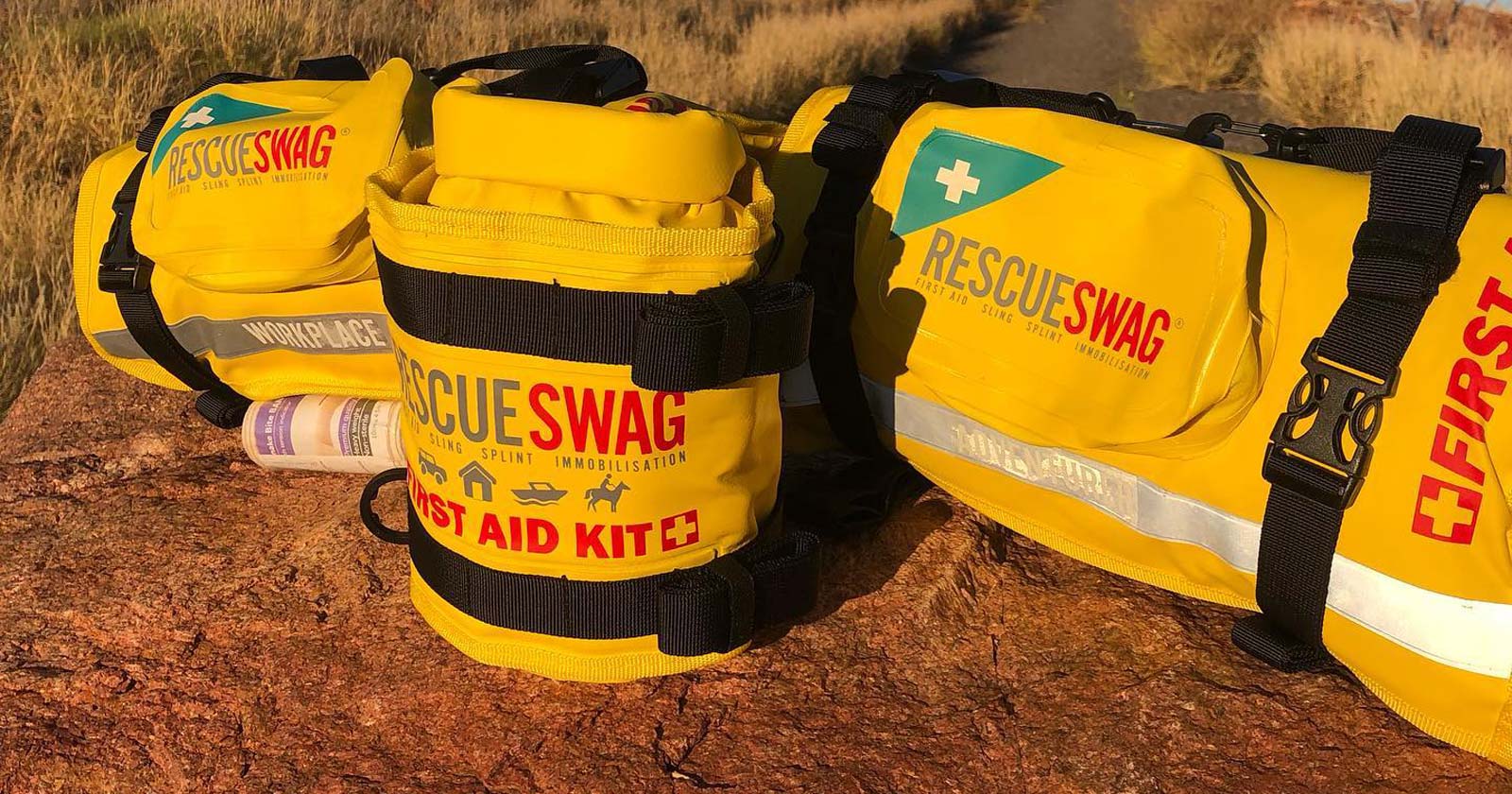
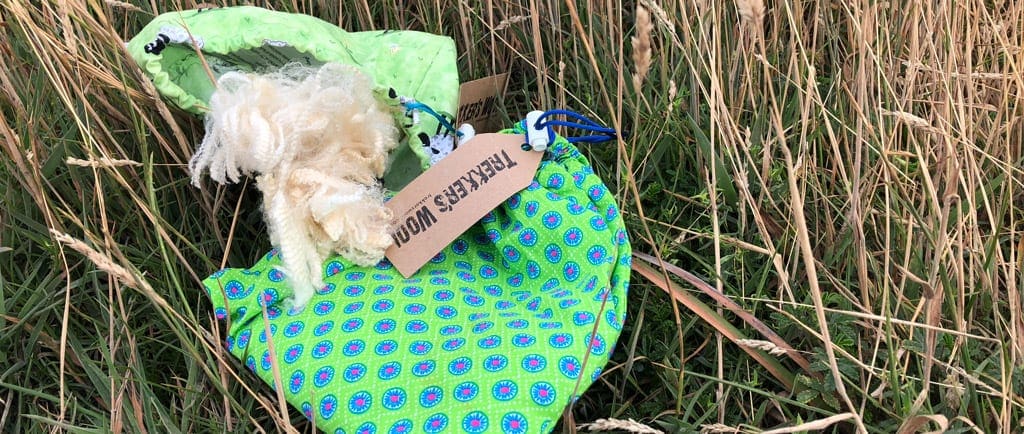
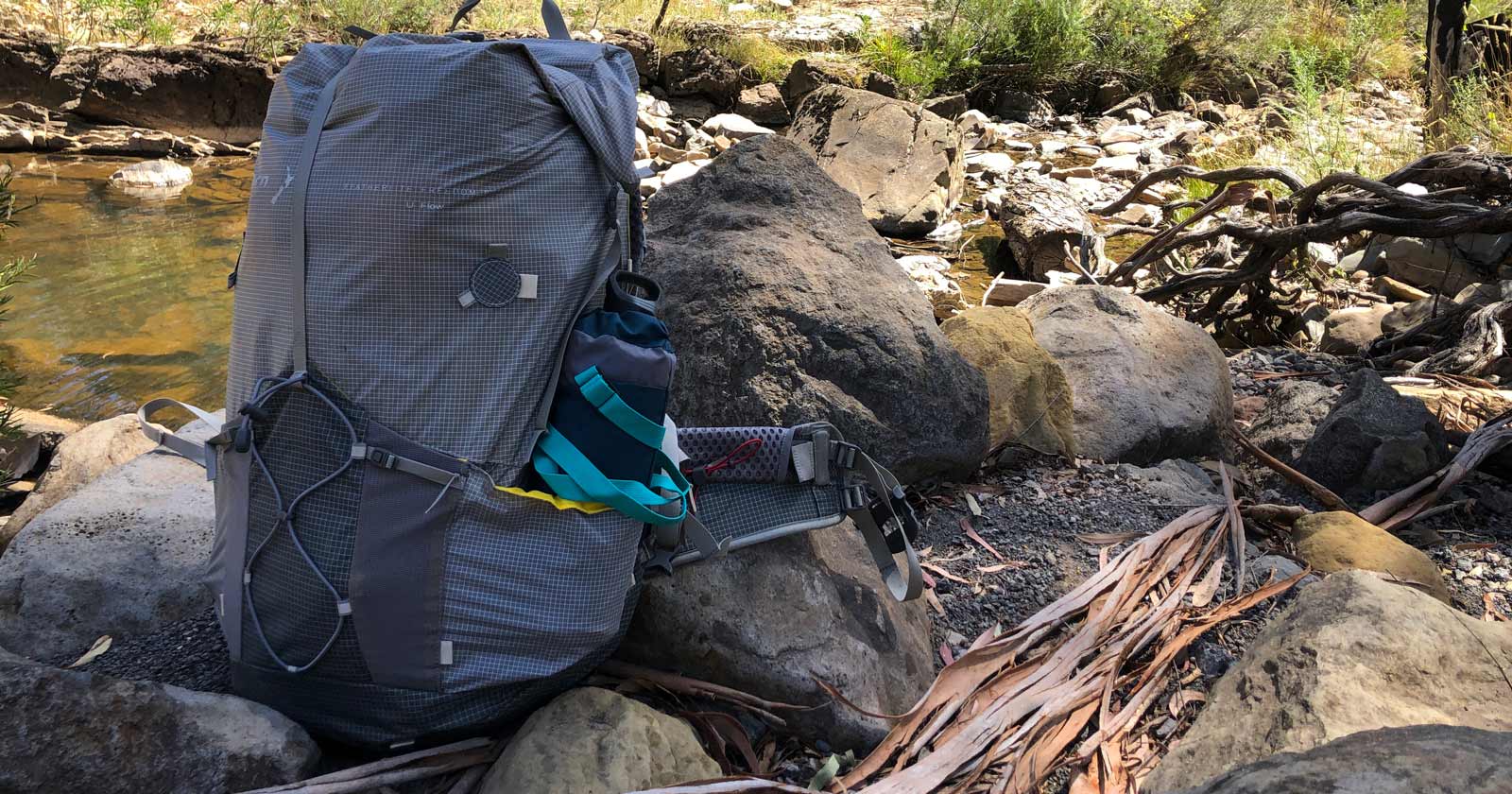



Very timely, thanks guys, am nearly ready for a new pair. ??